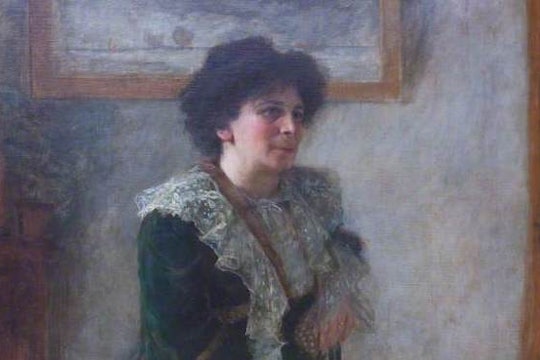
Via Wikimedia
Meet Hertha Ayrton, the mathematician who cleared WW1 trenches of poisonous gas
Ayrton was the first woman to recieve the Hughes Medal for outstanding research in the field of energy, but still the Royal Society refused her membership
Mathematician, inventor, and friend of Marie Curie, Hertha Ayrton was an outspoken advocate for women's rights in science and in the voting booth. Her Ayrton fan dispelled toxic fumes from WWI trenches, and her research on London's lamp functioning landed her the first Hughes Medal awarded to a woman. Although her inventions impressed her peers and saved the lives of soldiers, few of her colleagues supported her efforts for women's equality during her lifetime.
The daughter of a Polish watchmaker, Hertha was born in 1854 as Phoebe Sarah Marks. She had a natural gift for tinkering, which won her the family nickname “Beautiful Genius.” When she was just seven, her father died and left her mother in poverty with eight young children. Still, her mother recognized Hertha’s intellectual talents and so, when an opportunity arose for Hertha to go to London and live with her aunt who ran a school, her mother allowed her to go. She studied mathematics, Latin, French and music until, when she was 16, she was obliged to start working as a live-in governess to send money home to her family in Portsea.
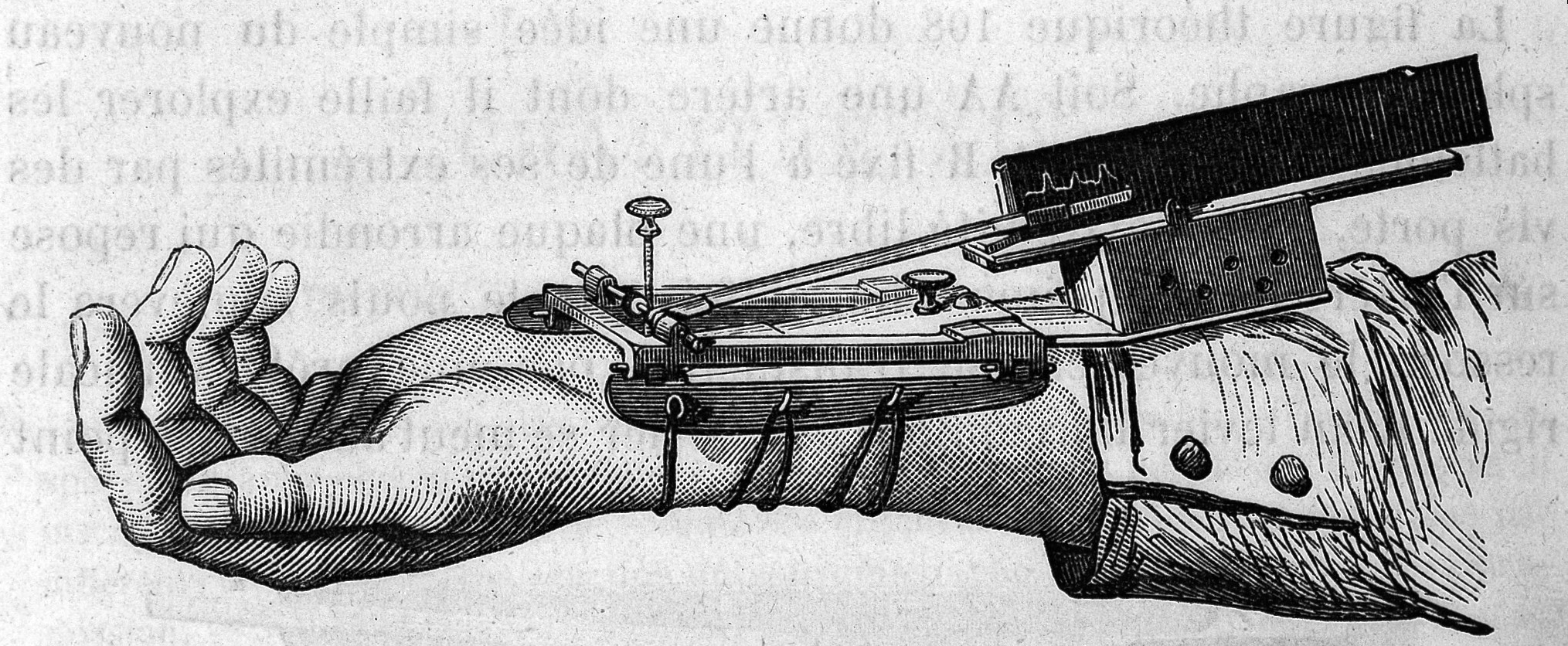
A sphygmograph
It was during this time — at a women’s suffrage meeting — that Hertha met Madame Barbara Bodichon, a prominent educationalist, artist and the founder of the Girton College for women at Cambridge. Bodichon helped Hertha enter Girton to study mathematics. It was also around this time that she acquired the nickname "Hertha" from an Algernon Swinburne poem. While a student at the college, and with Bodichon’s help, Hertha filed patents for several inventions, including a line divider that could be used by artists and designers to divide lines in equal parts or scale up drawings, and a sphygmograph that could record a person's pulse. Hertha would file 26 different patents in her life, striving to carve out a record of women’s accomplishments that others could follow.
“More lives than a cat”
After finishing college, Hertha took a job teaching mathematics. She also enrolled in night classes at Finsbury Technical College and, the following year, married her electrical engineering professor, William Ayrton. He would become her collaborator and a champion of her scientific pursuits.
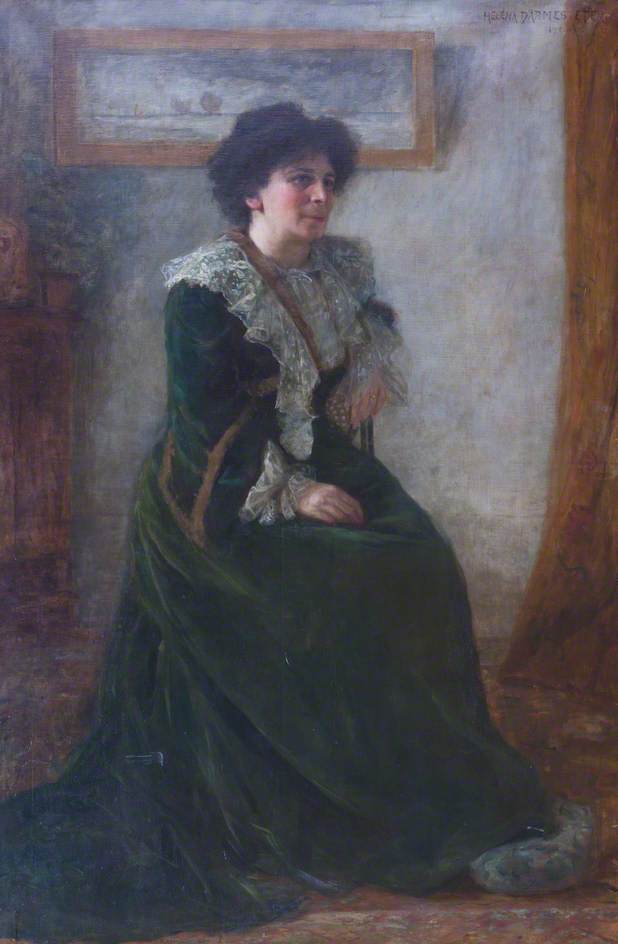
Portrait of Hertha Ayrton by her cousin Héléna Arsène Darmesteter
Via Wikimedia
William admired his wife’s talents, remarking to a friend that “you and I are able people, but Hertha is a genius.” In defiance of the conventions of the time and to some of his colleagues’ disapproval, William supported his wife’s scientific pursuits, even setting up a laboratory for her in the top floor of their house. Though the couple shared many intellectual interests, William was careful not to collaborate with Hertha on some of her projects to ensure that she was not robbed of the credit for her work.
Nevertheless, Hertha struggled throughout her life to receive recognition for her own achievements, once stating that “errors are notoriously hard to kill, but an error that ascribes to a man what was actually the work of a woman has more lives than a cat.”
The electric arc
In 1893, Hertha took over a project from William investigating the cause of an irritating hissing noise coming from the electric arc, which powered lamps in London at the time. The lamps consisted of two carbon rods with a charge running between them that produced an arc of light in the space between the rods. Hertha was the first to figure out that this loud hissing was due to the oxidation of the carbon electrodes. If you simply enclosed the whole contraption in a bulb so that it was not exposed to open air, the hissing stopped.
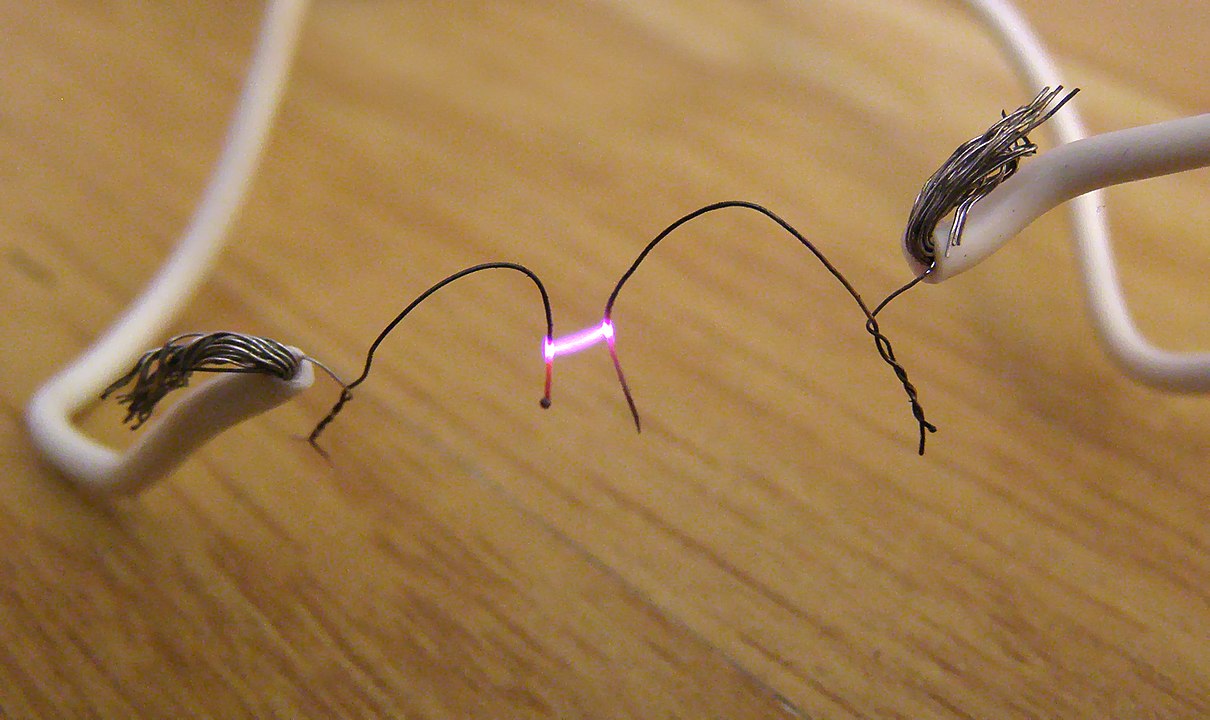
An electric arc forms between these two wires when a current jumps between them, creating light that used to be used in lamps in London during Hertha Ayrton's time. She figured out how to reduce the hissing noise caused by oxidation of the carbon rods
Khimich Alex via Wikimedia
Hertha’s remarkable work on the electric arc won the attention and admiration of contemporary scientists. She was the first woman invited to give a paper at the Institution of Electrical Engineers in 1899 and became the first woman elected to membership of that Institution. She spoke about her findings at the International Congress of Women in London and at the Electrical Congress in Paris. Her appearances convinced the British Association for the Advancement of Science to include women on scientific committees.
But even with all this success, she still faced barriers. In 1901, her paper on the electric arc was presented to the Royal Society by a man standing in for her, since women were not allowed admission. In 1902, her name was put forth for admission to the Royal Society but was rejected by a majority of votes because, simply, they were “of the opinion that married women are not eligible as fellows of the Royal Society.”
This decision held even after, in 1906, Hertha became the first woman — and only the second woman to date — to be awarded the Hughes Medal for outstanding research in the field of energy.
A friendship forged in rejection
Being refused admission to a prestigious scientific society put Hertha in good company. During the same time period, Marie Curie was refused admission to the Academie des Sciences, even though she had already won a Nobel Prize in Physics and was about to win a Nobel Prize in Chemistry. When Curie was nominated for membership in the Academie in Nature, Hertha wrote a letter to the members on Marie Curie’s behalf requesting “equality of treatment of intellectual work without regard to the sex of the workers.”
Bonded by rejection and by being physicists who were also widows of physicists (William Ayrton died in 1908), the two women formed a fast friendship and spent summers together with their children on the Hampshire coast. Hertha reportedly even got Marie Curie to join the women’s suffrage movement and sign the international petition to free British suffragists imprisoned and on hunger strike in 1912.
Making waves
These trips to the Hampshire coast inspired Hertha’s next major project, on ripple movements in sand and water. She became interested in the dynamics of the rippled appearances of sand on the beach. Her 1910 paper on the subject, “The Origin and Growth of Ripple-Mark,” was published by the Royal Society, though they still did not accept her as a member. The paper, while credited to her, is listed as having been “Communicated by the late Prof. W. E. Ayrton.” Even after death, men were given credit for women’s work.
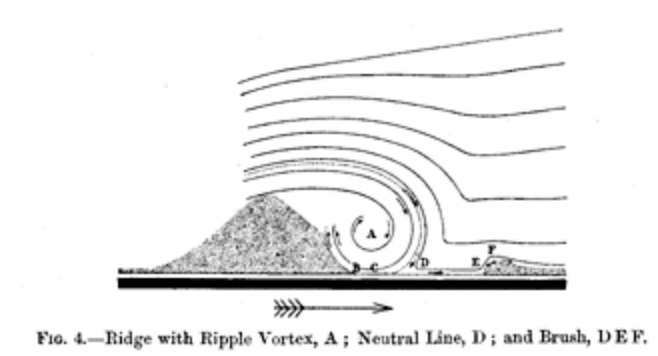
A figure from Hertha Ayrton's published paper "The Origin and Growth of Ripple-Mark" shows how waves create ripples in the sand. She later used this research to design a handheld fan that would expel poisonous gas from war trenches
Via Wikimedia
Hertha later developed this line of work into her invention of the Ayrton fan, which used the principles of wave motion to expel poisonous gas from war trenches. The use of chlorine, phosgene, and mustard gas as weapons was becoming common in warfare during the early days of WWI. Hertha’s fan was dismissed at first but, after proving useful, the war effort finally manufactured 104,000 Ayrton fans and distributed them to the men fighting in the trenches. Hertha spent the rest of her days building upon this wave theory to devise strategies of clearing noxious gasses out of mines and sewers.
The fight for women
At the same time that Hertha’s house served as an active laboratory, it was also “a centre for suffragist endeavor.” She joined the Women’s Social and Political Union in 1906 and participated in marches and demonstrations with her daughter, Barbara. She was attacked by a police officer while marching to Downing Street with suffragist Emmeline Pankhurst. In 1913, Hertha took in women who had been on hunger strike in prison and nursed them back to health.
In 1914, Hertha doubled down on her support of the suffrage movement. She donated part of an inheritance from mentor Barbara Bodichon, 100 pounds, the equivalent of £11,625 in 2019, to form the United Suffragists, which included both men and women. Hertha became the vice president and her daughter, Barbara, the secretary of the organization.
Hertha’s support of women was not limited to the suffrage movement. In addition to supporting the scientific endeavors of her friend, Marie Curie, Hertha was also an outspoken voice for the rights of women in science. According to her 1923 obituary, “It was her opinion that women were naturally inventive and original, and that these qualities, joined to the capacity for patient work that is universally allowed to be theirs, especially fitted them for scientific work.” She fought for this principle every day of her life.
And as her obituary writer also noted, “she was a good woman, despite of her being tinged with the scientific afflatus.”




There are so many women scientists that we’ve never even heard of (or at least I haven’t!) who suffered endless frustrations and discrimination to make a difference for future generations. I was pleasantly surprised to learn how supportive Hertha’s husband was of her scientific pursuits, and wonder how different her life, as well as the field of electrical engineering, would have been if he had disapproved or taken credit for her work. This article shined a light on Hertha’s story, which has fallen out of public memory despite her enormous contributions both to science and women’s suffrage. In so doing, we can see clearly how deeply engrained some prejudices are, and how far we’ve come since then.